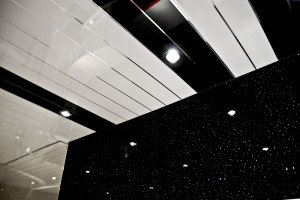How to Install Plastic Ceiling Panels
This entry was posted on Feb 3, 2014 by speedy-bedDoes your bathroom have a lovely avocado coloured suite with terrible ceiling tiles and a worn peach carpet? Well, if this sounds familiar then it may be time to do a bit of refurbishment. A lick of paint and a new shower is easy but how do you change a ceiling? Won’t it be complicated and require professionals?
You may be surprised to find out that you can change the ceiling yourself if you are good with your hands and not afraid of ladders. Here is everything you need to know about plastic ceiling panels.
Why Choose Plastic Ceiling Panels?
A new ceiling will also replace or recover an existing ceiling improving the overall appearance of a room. The type of panel is completely up to you and will be down to personal taste. They come in a variety of colours and patterns but no one design is better or worse than another.
Plastic ceiling panels should be chosen over traditional ceiling coverings as they have a hollow construction, meaning they are extremely light and easy to install even for the most novice of home improvers.
Plastic ceiling panels are a great addition to rooms such as bathrooms and kitchens as they are moisture resistant, meaning they will not be effected by water vapour unlike wooden or cardboard tiled ceilings. They are low maintenance and will require nothing but an occasional dust.
How to Install Plastic Ceiling Panels?
Ceiling panels should always be fitted before any wall surfacing, such as tiles. This way leaves room for error if this is your first time fixing a ceiling and any discrepancies can then be adjusted or covered up. Also by tiling after the ceiling panels have been fitted means silicone can be used to seal the join between wall and ceiling further securing your handy work.
There are a number of different methods of fitting ceiling panels. These include:
- Screws
- Adhesive and props
- Adhesive and staples
- Adhesive only
When fitting adhesive ceiling panels the main issue is that the panels must be supported in order to secure their weight while the adhesive dries and sets. Staples are a popular combination with this glue as they fix the ceiling in place while the drying adhesive is an added bonus of strength. These staples are then hidden by the overlapping of panels so you would never know they are there.
The most effective way of fixing the ceiling panels is using screws as they can be screwed into plastered ceilings and unscrewed if you want to remove the panels. This is not as common however as it can be a time consuming process, time that many DIY refurbers will not have.
If you are worried about securing your ceiling then wooden props can provide a handy support while the adhesive fixes. A handy tip is to place a little cardboard in between the wood and the ceiling to avoid any unwanted marks.
If you are interested in buying panelling for your ceiling then download a brochure here or give us a ring on 08448) 586670

